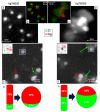Antimicrobial Nanostructured Coatings: A Gas Phase Deposition and Magnetron Sputtering Perspective
- PMID: 32046363
- PMCID: PMC7040917
- DOI: 10.3390/ma13030784
Antimicrobial Nanostructured Coatings: A Gas Phase Deposition and Magnetron Sputtering Perspective
Abstract
Antimicrobial coatings are a promising strategy to counteract the spreading of multi-drug-resistant pathogens through cross-contamination of surfaces. Coatings with nanostructured characteristics can exploit the different antimicrobial mechanisms of nanomaterials provided the composition, the morphology and the mechanical properties of the film can be tuned by the specific synthesis methods. This review addresses the synthesis of antibacterial nanostructured coatings with a focus on physical synthesis methods. After a short description of the bacteria-NP interaction mechanism, leading to the killing of cells, paradigmatic examples of coatings, obtained by magnetron sputtering and supersonic cluster beam deposition, are discussed, with an emphasis on the possibility of combining different elements into the coating to widen the bactericidal spectrum.
Keywords: antimicrobial coatings; clusters; granular materials, functional materials; magnetron sputtering; mechanical properties; metals; oxides; single and multi-element nanoparticles; supersonic beams.
Conflict of interest statement
The authors declare no conflict of interest.
Figures










References
-
- Calderon Velasco S., Cavaleiro A., Carvalho S. Functional properties of ceramic-Ag nanocomposite coatings produced by magnetron sputtering. Prog. Mater. Sci. 2016;84:158–191. doi: 10.1016/j.pmatsci.2016.09.005. - DOI
-
- Mazza T., Barborini E., Kholmanov I.N., Piseri P., Bongiorno G., Vinati S., Milani P., Ducati C., Cattaneo D., Li Bassi A., et al. Libraries of cluster-assembled titania films for chemical sensing. Appl. Phys. Lett. 2005;87:103108. doi: 10.1063/1.2035874. - DOI
-
- Baletto F., Ferrando R. Structural properties of nanoclusters: Energetic, thermodynamic, and kinetic effects. Rev. Mod. Phys. 2005;77:371–423. doi: 10.1103/RevModPhys.77.371. - DOI
Publication types
LinkOut - more resources
Full Text Sources
Miscellaneous

